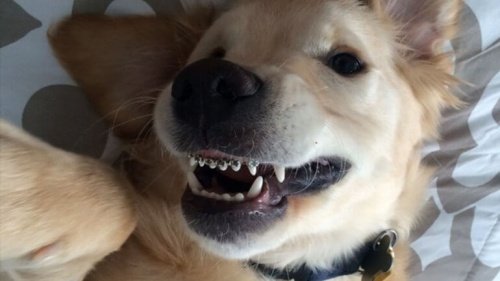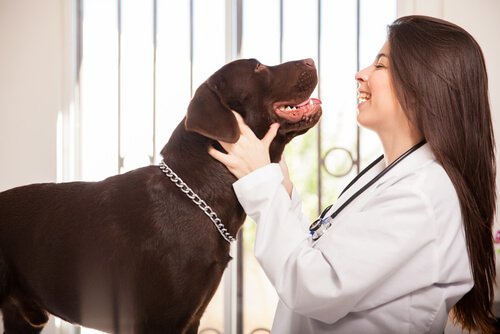Braces for Dogs? It's Possible!

Orthodontics isn’t the most well-known medical procedure among veterinarians, but now a revolution has come to the world of braces: new braces for dogs. Yes, what you just read is correct. If your dog has any kind of deformity in their teeth, there’s a solution for it.
In today’s article, you can find out why these braces were created, how much they cost, and how to get them. Don’t miss a singles detail — even if it’s out of curiosity, it will probably be interesting to you.
Why braces?
Dogs, just like people, can have dental deformities caused by several reasons, such as:

- Mouth wounds
- Periodontal disease
- Mouth tissue defects
- Wear and tear
- Fractures
- Birth defects
Until recently, there wasn’t a viable solution to solve this problem, which must be solved for health reasons more than aesthetic ones. Malformations can make it difficult for an animal to hold food in their mouth and chew. Therefore, some pets swallow their food down whole, which causes digestion problems.
Braces for dogs are born
Jim Moore is a canine dentist who became popular due to photos posted on social media showing braces for dogs. One photo showed a dog with braces that Jim Moore himself had put on.
Depending on the type of dental deformity the animal has, there are different treatments, such as silicone or metal braces. In some cases, braces aren’t needed, and the defects can be corrected in other ways.
Although most people use braces for aesthetic purposes, Jim Moore supports the idea that for dogs, braces have nothing to do with aesthetics, but rather a dog’s health.
Overly large upper canine teeth can cause wounds in a dog’s mouth, and even form fistulas. Deformities can also cause stomach and digestive problems.
How do I know if my dog needs braces?
If you have noticed that a tooth or upper canine tooth is out of place in your dog’s mouth, the best way to know if they’ll need braces is by taking them to the vet. He/she will provide you with advice and refer you to a canine dentist.
Reasons why a dentist might prescribe braces to your dog. Read below:
- Malocclusion. This is when your dog’s jaws don’t fit together the way they should, because of a birth defect or from a blow to the head.
- Linguoversion. This is the name for a deformity caused by the lower canine teeth growing inward.
- Lance Canines. This is the name for when the upper canines grow outward.
In all these cases, your pet will need braces.
Braces for dogs can cost up to two thousand dollars, a similar price to what they cost for people.
Does the problem occur in certain breeds?

In some cases, yes. Snub-nosed and wide-headed breeds tend to have orthodontic problems, although they’re not always bad enough to need braces.
You have to observe your pet and see whether there have been any changes in your dog’s teeth, or if the deformity is worse than you thought.
In addition, there are small breeds that lose their baby teeth late. When that happens, there’s no room for new teeth to grow, and they become deformed.
The good news is that these problems don’t seem to be important, but now they’re solutions. Sometimes people think that dogs can have similar problems to humans, that won’t cause dogs any harm. This myth can cause pets harm, but that they have a solution. Why not use it then?
The puppy who became a social media star and a pioneer (or at least in the public eye) for using braces for dogs has shown much improvement in his teeth. He would have had a lot of problems if it weren’t for this treatment.
Undoubtedly, this new technique will alleviate a lot of pain, and prevent health problems in thousands of dogs around the world.
Main image source: www.infobae.com